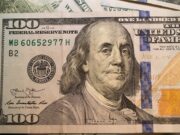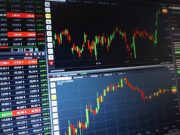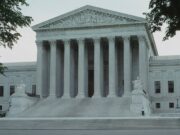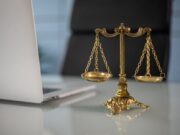Introduction
The rise of TikTok and its influence on public discourse
TikTok has transformed from a short-form video app into a powerful force in modern communication. What began as a space for dance trends and viral humor now serves as a platform for political commentary, grassroots activism, and public awareness campaigns. With its algorithm-driven reach and vast user base—particularly among Gen Z—it has reshaped how people engage with news, express opinions, and rally around causes.
Growing legal scrutiny over content moderation and platform responsibility
As TikTok’s role in shaping discourse expands, it has drawn attention from lawmakers and regulators. Concerns about misinformation, harmful content, and foreign data access have intensified calls for oversight. Debates now focus on whether TikTok’s moderation practices are adequate, overly restrictive, or potentially biased. Lawmakers are also questioning the responsibilities these platforms bear as digital gatekeepers—especially when influencing elections, public health messaging, or national security.
The broader implications for First Amendment rights in the digital age
The rise of social media platforms like TikTok poses complex questions about free speech. Although the First Amendment restricts government censorship, it does not apply to private companies. This creates a legal gray area where user expression may be limited without clear constitutional protections. As platforms grow more influential, courts and policymakers are rethinking how First Amendment principles should apply in the digital space.
1. Content Moderation vs. Free Speech Rights
How TikTok and similar platforms regulate harmful or misleading content
Social media platforms like TikTok enforce community guidelines to control harmful, false, or offensive content. These rules aim to create a safe online space, often by flagging or removing posts that promote hate speech, misinformation, or dangerous behavior. TikTok uses automated systems and human moderators to screen content, with increasing attention to topics such as political disinformation, medical falsehoods, and violent speech.
Legal distinction between private platform policies and constitutional rights
One of the central legal issues in content moderation is that the First Amendment protects individuals from government censorship—not from restrictions imposed by private companies. This means platforms like TikTok have broad authority to control what users can post under their terms of service. Courts have consistently upheld that while users have free speech rights, those rights do not extend to forcing a private company to host any particular message.
Case examples of controversial bans or takedowns
There have been multiple instances where TikTok faced backlash for removing or restricting content. Posts related to political protests, minority rights, or pandemic criticism have occasionally been taken down, sparking debates about transparency and bias. These cases highlight the ongoing tension between protecting users and ensuring open expression in digital spaces.
2. Government Regulation and Proposed Bans
Overview of U.S. legislative efforts to restrict or ban TikTok (e.g., RESTRICT Act)
In recent years, TikTok has become the focus of several proposed laws aimed at limiting or banning its use in the United States. One prominent example is the RESTRICT Act, a bipartisan bill that would give federal authorities the power to regulate or block technology from countries considered security threats. While the bill doesn’t mention TikTok by name, it is widely seen as targeting the platform due to its parent company, ByteDance, being based in China.
National security, data privacy, and foreign influence concerns
The push for regulation is rooted in fears that TikTok could compromise user data or be used for foreign propaganda. Lawmakers and intelligence officials worry that sensitive information collected by the app could be accessed by the Chinese government or used to shape public opinion in the U.S. These concerns have led to bans on TikTok on federal devices and raised questions about the app’s future for general users.
Legal challenges to potential platform bans under the First Amendment
Efforts to ban TikTok face legal scrutiny, particularly regarding free speech rights. Critics argue that banning an entire platform could violate the First Amendment by limiting how Americans communicate and access information, sparking lawsuits and constitutional debates.
3. Impact on Creators, Users, and Political Speech
How regulation affects digital creators and influencer livelihoods
For many users, TikTok is more than entertainment—it’s a full-time career. Content creators rely on the platform for income through brand partnerships, live streams, and sponsored posts. Regulatory restrictions or a potential ban could disrupt these income streams overnight, affecting thousands of influencers and small business owners who depend on the platform to reach their audiences and grow their brands.
TikTok as a tool for activism, protest, and civic engagement
Beyond commerce, TikTok has become a powerful platform for grassroots organizing and political activism. Users have mobilized support for social justice movements, shared real-time updates from protests, and encouraged voter participation. The app gives a voice to communities often underrepresented in mainstream media, making it an important space for democratic participation and public discourse.
Risks of overregulation chilling online expression
While some regulation may be necessary to ensure safety and privacy, excessive restrictions could harm free expression. Overregulation might discourage users from discussing sensitive topics or challenging government policies for fear of removal or penalties. As lawmakers consider new rules, they must carefully balance security concerns with the need to protect open dialogue in digital spaces.
4. The Legal Future of Social Media Platforms
Evolving court rulings on platform liability and user rights
As legal challenges surrounding social media grow, courts are increasingly being asked to define the boundaries of platform responsibility. Judges have considered whether platforms can be held liable for harmful or misleading content posted by users, as well as whether users have a right to access these platforms under free speech protections. These decisions are gradually shaping a new legal framework for how digital spaces are governed.
The role of Section 230 in shaping legal protections
Section 230 of the Communications Decency Act remains a cornerstone of internet law in the U.S. It shields platforms from being treated as the publishers of user-generated content, allowing them to moderate without assuming legal responsibility for everything posted. However, this protection has come under renewed scrutiny, with some lawmakers calling for reforms to hold platforms more accountable while others defend it as essential to online innovation and open expression.
What legal experts foresee for the balance between free speech and safety Legal scholars anticipate that the future of social media regulation will involve finding a middle ground—where platforms can limit harmful content without stifling free expression. This balance will likely require updated legislation, clearer guidelines, and a more nuanced understanding of how speech functions in a digital environment.

















































